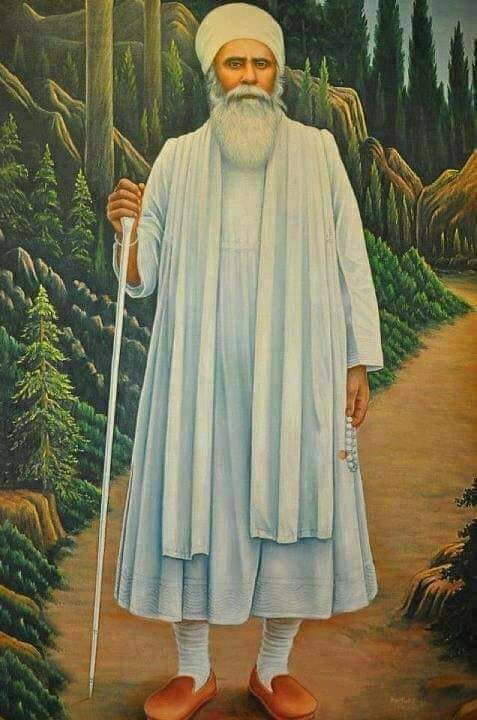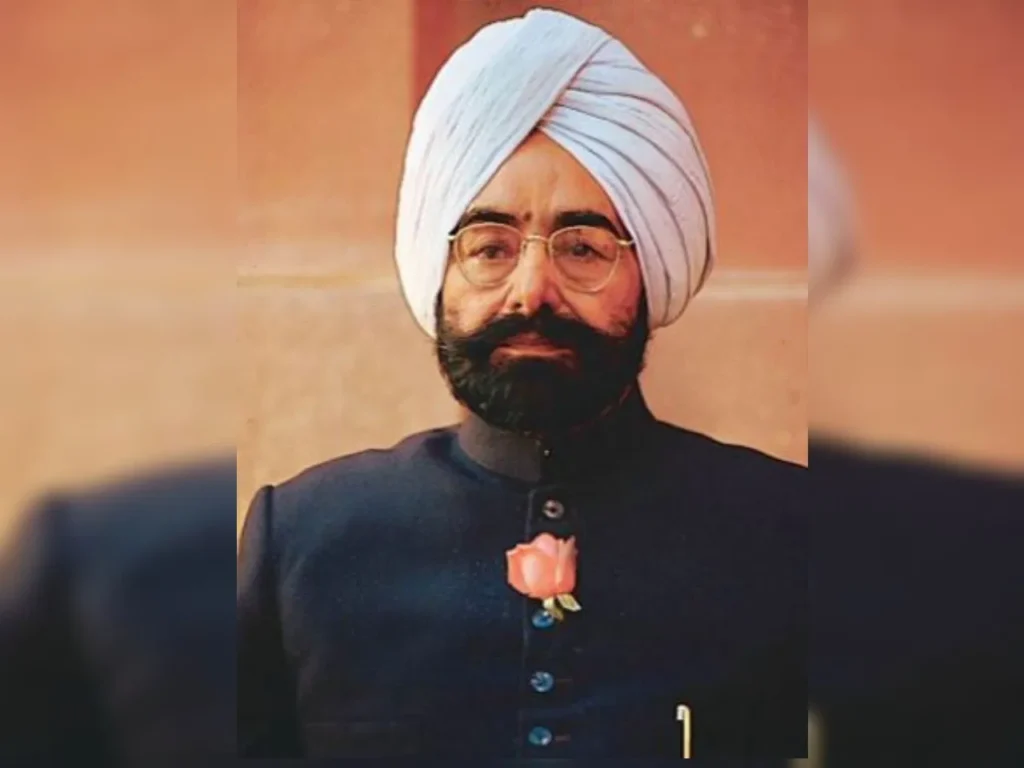"Profiles of Inspiring Ramgarhia Sikh Personalities Who Have Shaped History and Culture"

Sant Baba Nand Singhji
Sant Baba Nand Singhji (8 November 1870 – 29 August 1943) was a Sikh Saint. He is known as the founder of the Nanaksar Kaleran sampradya (Nanaksari sect) of Sikhism. Baba Nand Singh was born on 8 November 1870 in a Ramgarhia Family at Sherpur village in Jagraon, Ludhiana district of Punjab to Sardar Jai Singh and Mata Sada Kaur. It is reported that he displayed a proclivity for meditation from a young age, once being found doing so while sitting at the edge of a well in the middle of the night.
Nand Singhji left his house to do sewa at Gurdwara Sahib in Firozpur. He acquired a distinct group of followers during his lifetime. At a very young age, he left his family to seek enlightenment and became a disciple of Maha Harnam Singh, another great Saint of great spirit. There he met Harnam Singh, who was impressed by his spirituality. He mentored him in the ways of devotion and the spirit of sacrifice.
It is said Sant Baba Nand Singhji went to a forest for further meditation. After some time, he returned from the forest and stayed outside nearby village. The villagers constructed a temporary shelter for him. After some time, dwellers of the Kalera village approached him with an invitation to their village, which he accepted. En route, he stopped at a well located between Kalera and Kaunke. He made his camp there, and a small hut was made for him by the villagers. Singh started his meditation there. Sant Baba Nand Singhji established his dera, now known as Nanaksar, near Kalera. The food (langar) was provided by nearby villagers, a practice which is in place to this day. Unlike other gurdwaras, no financial offerings are made by the devotees in front of the Guru Granth Sahib at this Sri Nanaksar Gurdwara.

Sant Ram Singhji Kuka
Sant Ram Singhji Kuka (3 February 1816 – 29 November 1885 was the second guru (religious leader) of the Namdhari sect of Sikhism. He is credited as being the first British Indian to use non-cooperation and boycott of British goods and services as a political tool. He was exiled to Rangoon, Burma (Myanmar) by the British colonial government of India on 18 January 1872. Ram Singh was born in a small-farming Tarkhan Ramgarhia family to mother Sada Kaur and father Jassa Singh. He lived in the village of Raiyan, near Sri Bhaini Sahib, Ludhiana. He was raised without an education and only learnt how to become a carpenter when he grew up, although he did not succeed in that so his father sent him to the army of the Sikh Empire at age 20[5] under Sher Singh. As the empire fell apart after the death of Maharaja Ranjit Singh, concerns over British power and Sikh decline led him to galvanize his followers (of mostly humble origin) to proclaim a new “Kuka Khalsa” to restore Sikh prestige.[5]
Sant Ram Singhji Kuka was a member of a unit of Prince Naunial Singh’s platoon, the Baghel Regiment. His regiment was sent to Peshawar to bring the royal coffers. On its way back, the unit rested at Hazro Fort, now in Pakistan. It is said that Sant Ram Singhji Kuka and some soldiers of his regiment went to meet Balak Singh of the Namdharis. Balak Singh was overjoyed to see Ram Singh and according to folklore told him: “I had been waiting for you.”He told Sant Ram Singhji Kuka that he was the next in line to Balak Singh. Balak Singh gave him “Patasha” (sugar bubbles), a coconut, five paise coins and took five rounds around him in reverence and bowed before him, making him his successor.

Giani Zail Singh
Giani Zail Singh, born Jarnail Singh; 5 May 1916 – 25 December 1994, was an Indian politician from Punjab who served as the seventh president of India from 1982 to 1987. He was the first Sikh to become president. Born in a Ramgarhia family in Sandhwan in the princely state of Faridkot, Singh trained to be a granthi and was given the title of giani, meaning a learned man, while training at the Sikh Missionary School in Amritsar. Singh was associated with peasant agitations and his political activism in the Praja Mandal, an organization allied with the Indian National Congress, saw him sentenced to solitary confinement between 1938 and 1943. The stints in jail inspired him to change his name to Zail Singh.
After independence, Faridkot was merged with the Patiala and East Punjab States Union and Singh served as its minister of revenue and agriculture during 1949–51 . Singh was a member of the Rajya Sabha during 1956–62 and member of the Punjab Legislative Assembly during 1962–67. He had served as president of PEPSU Pradesh Congress
Committee during 1955–56 and became president of Punjab Pradesh Congress Committee in 1966 serving in that post until his election as Chief Minister of Punjab in 1972.
As Chief Minister, Singh is credited with having established India’s first semiconductor manufacturing unit in Mohali, repatriating the remains of Udham Singh which were then cremated in Punjab with state honours and much more.
Elected to the Lok Sabha in 1980, Singh was appointed India’s Home Minister by Prime Minister Indira Gandhi. In 1982, he was elected President of India. The initial years of his presidency saw the Operation Blue Star, the assassination of Indira Gandhi, and the 1984 anti-Sikh riots. After Rajiv Gandhi became Prime Minister, relations with Singh turned frosty with the Prime Minister refusing to meet with or inform the president on matters of policy and placing curbs on his foreign and domestic travels. Singh hit back by questioning government policy and subjecting proposals sent to him to minute scrutiny. In 1986, he employed a pocket veto on the Indian Post Office (Amendment) Bill passed by Parliament. Allegations of corruption in the procurement of howitzers from Bofors, the government’s refusal to furnish the documents sought for by President Singh and his much-publicized reproach to the government led to speculation that Singh intended to dismiss the government of Rajiv Gandhi. Singh however retired at the end of his tenure in 1987 and was succeeded as president by R. Venkataraman. Singh died in 1994 of injuries sustained in a road accident. His samadhi is at the Ekta Sthal in Delhi. Singh’s memoirs were published in 1997. His birth centenary was celebrated in 2016 where a documentary film and a book on his life were released.
